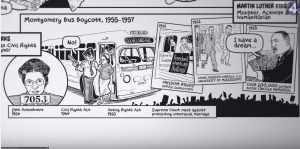
For this presentation I decided to look at the evidence that my group collected in class at the Panhandle and compare it to the evidence I collected outside following that session. In the Huff reading there were many references made to the importance of not only viewing evidence in a visual way as it can by ue misleading. Through the use of graphs a speaker can sway the audience to see things a certain way by showing more or less significant drops in data through the way the numbers are spaced.
The evidence we collected at the Panhandle was on how many cyclists were wearing helmets, we did this in two ten minute sessions in the late afternoon on a Tuesday. In our first session we saw 49 cyclists, 38 of which were wearing helmets and 11 who were not which made up for a total of 29% not wearing helmets. In the second ten minute session we only saw 23 cyclists as the Panhandle became significantly less busy. Of these cyclists 16 were wearing helmets and 7 were not which made for a total of 43% not wearing helmets in the second session. According to Zompetti it is difficult to compare these two lots of statistics, this is because one is from a pool of people that is almost double of that of the second session. One observation we made is that when we collected data at this time majority of the people not wearing helmets were white males.
On a Monday morning I went back to the Panhandle to collect more data on cyclists. In a 20 minute session I saw a total of 45 cyclists of which 26 were wearing helmets and 19 were not. Unlike in the data collected in class I found that there was a mixture of both males and females not wearing helmets and many were on rental bikes, stopping and looking for directions on the maps attached to the bikes. This made it look as if they may have been more tourist at this time of day.
I think to get completely accurate data on helmet usage in the Panhandle it would be important to go for the same length of time but at different times of day. This would account for the different types of people passing through at different time whether it was for leisure or on their way to or from work in the city.





